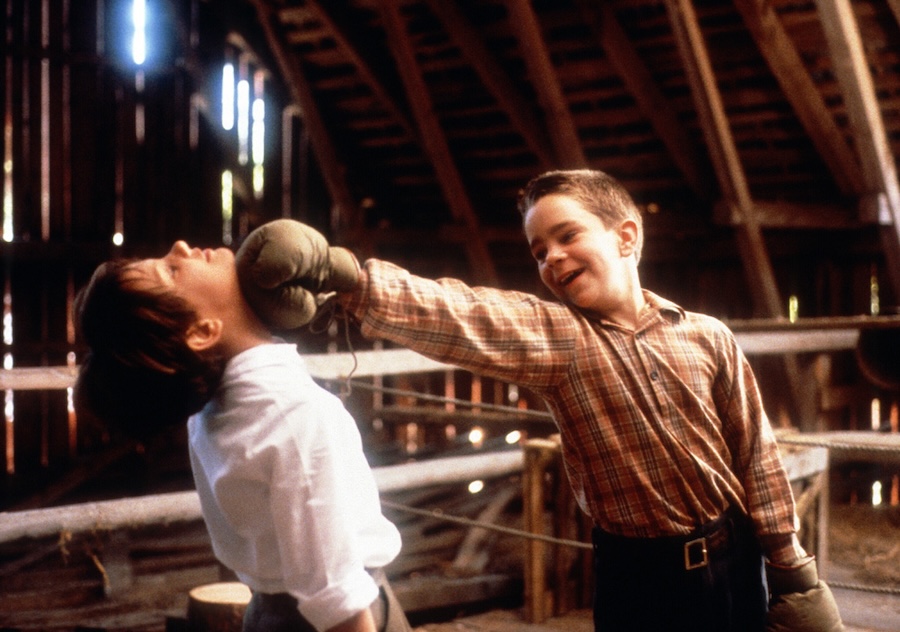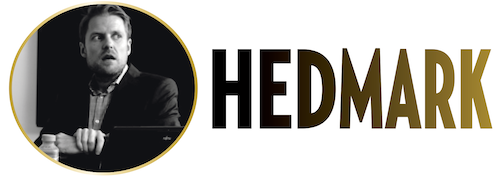

Two years had passed since the Swedish premiere of My Life as a Dog when it opened in American theaters – and became a hit. In spite of its subtitles, the film managed to charm audiences and Lasse Hallström suddenly found the gates of Hollywood open. There would be Oscar nominations and Hallström started a new career as a successful American filmmaker.
My Life as a Dog reportedly made a huge impact on people as diverse as Richard Harris, Kurt Vonnegut and Michael Jackson (who invited its young star to his home), and after watching it for the first time in many years, I found it as charming as ever.
A chronically ill mother
In the late 1950s, ten-year-old Ingemar Johansson (Anton Glanzelius) lives in a small town in southern Sweden together with his mother (Anki Lidén) and older brother (Manfred Serner). He’s a creative boy, but his games and rowdiness are becoming too much to bear for his mother who’s chronically ill. When she’s simply too exhausted, he’s sent to his uncle Gunnar (Tomas von Brömssen), who lives a train-ride away. He and his wife are much more playful than Ingemar’s mother, and he feels right at home. This is also where he meets Saga (Melinda Kinnaman), a girl who can beat any boy at soccer and boxing.
A difference in darkness
Hallström was no beginner when he agreed to turn Reidar Jönsson’s autobiographical novel into a movie. He had made a name for himself in Sweden with several innovative romantic comedies and ABBA music videos (as well as a film featuring the band, ABBA the Movie (1977)). I’m sure that Jönsson was pleased with the film and the international attention that followed, but he did note the difference between his novel and the movie. There was no happy ending in Jönsson’s story, but Hallström argued that there was a happy ending inherent in the fact that the book did ultimately get written. Jönsson couldn’t object to the logic of that reasoning, but believed that the director was simply scared of the darkness and cruelty that he had included in his story. This will sound familiar to anyone who’s ever seen a film by Hallström; darkness is often present but only as an undercurrent, never in its raw shape.
The writers craft a credible, compelling portrait of a boy who has a number of childish obsessions.
Still, sweetness never gets the upper hand in My Life as a Dog. The writers craft a credible, compelling portrait of a boy who has a number of childish obsessions (including an inability to drink milk out of a glass like a normal person), but also a curious, intellectual mind. There are sorrows and disappointments in Ingemar’s life, but he understands a crucial fact: it could always be worse, something he realizes when he compares his situation with that of Laika, the dog that was sent into space by the Russians in 1957.
It’s a lovely coming-of-age saga with an enchantingly nostalgic portrait of the village where Gunnar lives (aided by Björn Isfält’s moving score), and a cute budding romance between Ingemar and the tomboyish Saga; one of the film’s best scenes has Saga talking about how her developing breasts are annoying her, a distraction when she’s playing soccer, and Ingemar, bless his heart, has no idea what to say or do. That scene works to perfection thanks to Glanzelius and Kinnaman’s endearingly natural performances.
Von Brömssen is also unforgettable as the uncle who becomes a father figure to Ingemar. Watching this film as a kid, I tended to idolize this character. Who wouldn’t want a fun uncle like that? As an adult though, I completely understand the mother’s pain and in the end the film beautifully shows the deep bond between her and Ingemar.
My Life as a Dog 1985-Sweden. 101 min. Color. Directed by Lasse Hallström. Screenplay: Lasse Hallström, Reidar Jönsson, Brasse Brännström, Pelle Berglund. Novel: Reidar Jönsson. Music: Björn Isfält. Cast: Anton Glanzelius (Ingemar Johansson), Tomas von Brömssen (Gunnar), Anki Lidén (Ingemar’s mother), Melinda Kinnaman, Kicki Rundgren, Lennart Hjulström, Ing-Marie Carlsson, Ralph Carlsson… Johan Widerberg.
Trivia: Original title: Mitt liv som hund.
Golden Globe: Best Foreign Language Film. Guldbagge Awards: Best Film, Actor (Glanzelius).
Last word: “I thought that it was a very Swedish movie when I made it, but seeing it play to an audience abroad was fantastic because they reacted to exactly the same moments as the Swedish audience. I think that people still respond to the underlying emotions despite the fact that it was very Swedish in terms of location and story.” (Hallström, Scan Magazine)
